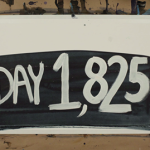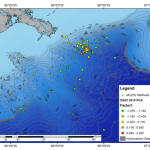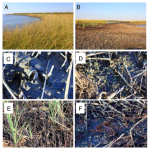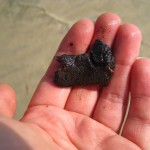Remember Dr. M’s recent disturbing post about the quelling of independent science in the Gulf? I can now officially announce that my lab was one of the recipients of the rapid response research grants awarded by the National Science Foundation—hurrah! I’m the postdoc assigned to this project, which aims to characterize pre-spill meiofaunal community structure in the Gulf of Mexico using high-throughput 454 sequencing. The best news? I’ll be blogging and twittering (@Dr_Bik) about this project in real-time, so all you readers will have a first hand look at our awesome, cutting edge science studying the effects of the Deepwater Horizon spill.
Our project team has an extensive set of baseline samples representing deep-sea and shallow water habitats (see map below). We will be merging both taxonomic expertise and metagentic data to assay the diversity of virtually all eukaryotic meiofauna in Gulf sediments, and address two key questions:
1) How unique are the meiofaunal communities in the GOM?
2) How structured are the meiofaunal communities within the GOM?
Answering these two questions will allow us to better understand the effect of anthropogenic disturbance on the meiofaunal communities. These taxa function as key primary consumers within marine ecosystems, with meiofaunal diversity and abundance exhibiting a linear correlation with primary productivity (De Troch et al. 2006). Temporal comparisons of meiofaunal communities will be invaluable for assessing spill impacts and habitat recovery.

My first mission is a sampling trip to the Gulf from September 12th-25th . I’ll be going down to the University of Texas at San Antonio and Auburn University to meet with collaborators, and then heading to Dauphin Island and out on a boat to get some samples off the continental shelf. Following that, I’ll be driving along the Gulf coast collecting some “post-spill” samples for comparison to our baseline data (The orange diamonds on the map give you a rough idea of the areas I plan on visiting).
After reading that Newsweek article, I’m interested to see if I will run into any problems in the Gulf. Will I be kicked off any beaches? Will my samples be confiscated? Can I use my charm and fake English accent to get myself out of above-mentioned situations should they arise?
Even if there isn’t any drama, I will be on the lookout for tarballs, slicks, and sheens (oh my!). I’ll be sending regular updates and pictures via twitter, as well as blogging longer entries on DSN. In the meantime, feel free to send me any questions, requests or suggestions! The countdown begins, T-minus 6 days…
References:
De Troch, M.D., et al. (2006). Resource availability and meiofauna in sediment of tropical seagrass beds: Local versus global trends. Marine Environmental Research, 61 (1), 59-73 DOI: 10.1016/j.marenvres.2005.05.003






Is it me or has everyone seem to forget about the oil leak?
I can vouch for Dr Bik’s presence on the Gulf Coast. We met on the beach today as we each took samples. Thank you Dr. Bik for helping us out down here. We get to feeling like nobody really cares as the EPA, DEP, County and local governments try their best to avoid doing any actual testing. It was nice to meet someone sincerely interested in learning about our situation. If the Surfrider Foundation can be of any assistance to you or your colleagues, please just ask.